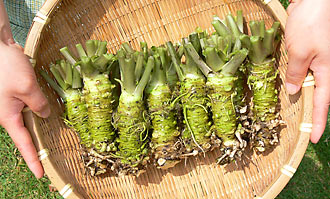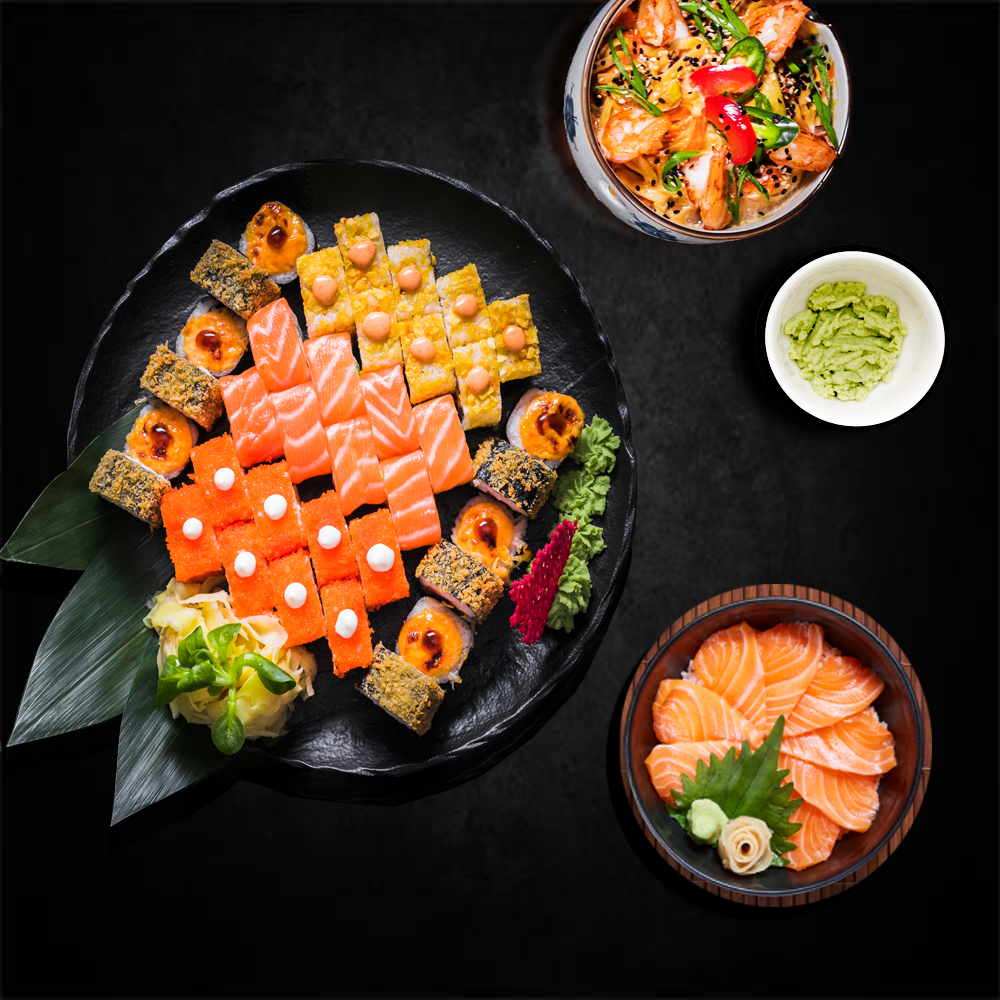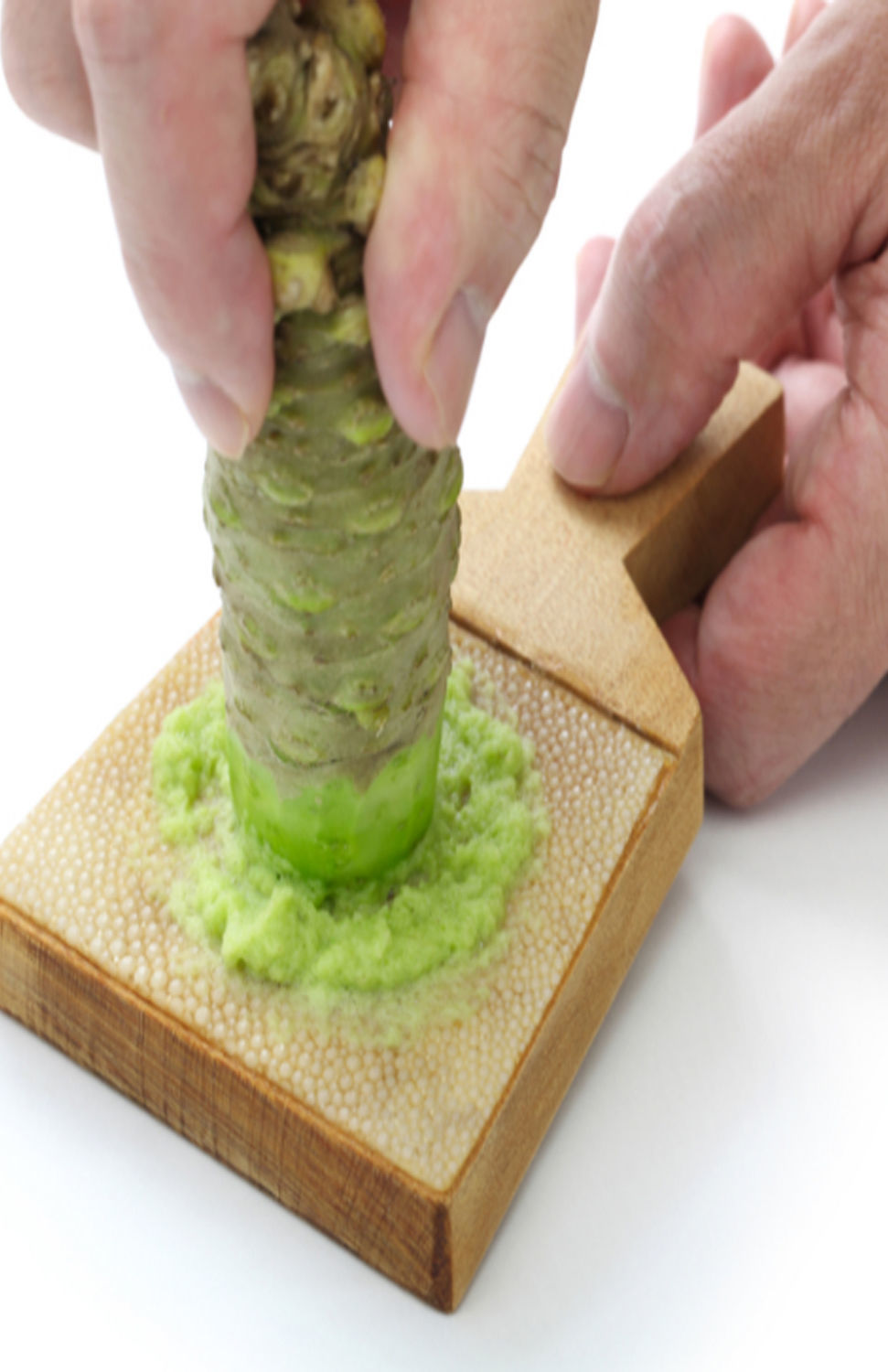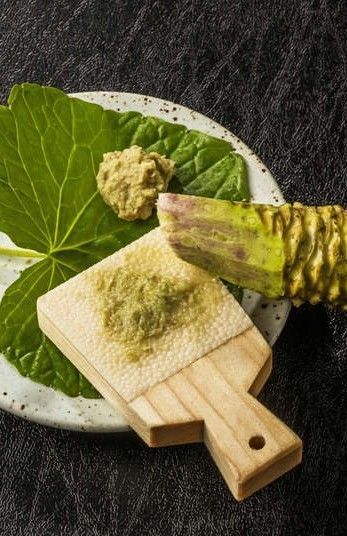Let's get to know Wasabi Sushi
Tags: wasabi, wasabi fresh, fresh wasabi, wasabi sushi, sushi, wasabi paste, wasabi powder, wasabi sauce, wasabi mayonnaise
Let's get to know Wasabi Sushi !!!
Nowadays, if all of Wasabi and Sushi people know already. But before becoming Wasabi and sushi How did it come?
This article, we are going to know the wasabi and sushi.
WASABI

WASABI (Wasabia japonica syn. Eutrema japonica) is a member of the Brassicaceae (Cruciferae) family and it is an indigenous herb of Japan. It is the same family as cabbage and in Japanese writing (kanji characters) means ?Mountain Hollyhock? as the leaves look like Hollyhock. It is a perennial which grows about knee high and have one main root (rhizome) and various little roots ? normally the main root (rhizome) will be used as Grated WASABI.
Since its unique flavor is not oil-based as it is with chili peppers, the strong or uncomfortable sensation of eating wasabi does not last very long, and some people actually find it pleasant and invigorating!
The powerful smell is derived from a specific part of the plant’s chemical makeup, the high levels of allyl isothiocyanate, while the taste comes from closely related isothiocyanate compounds. These chemicals work as a defense mechanism against predators who try to consume the plant, but it hasn’t worked too well on humans! These isothiocyanate chemicals also have a strong impact on the health benefits of wasabi.
SUSHI

The Beginnings of Sushi
The history of sushi is an interesting tale of the evolution of a simple dish. Originally, sushi arose out of a way of preserving food. Fish was placed in rice and allowed to ferment, which allowed an individual to keep the fish edible for some time. The rice was thrown away and the fish was eaten when needed or wanted. The method spread throughout China and by the seventh century, had made its way to Japan, where seafood has historically been a staple. The Japanese, however, took the concept further and began to eat the rice with the fish.
In the early 19th century, a man by the name of Hanaya Yohei conceived a major change in the production and presentation of his sushi. No longer wrapping the fish in rice, he placed a piece of fresh fish on top of an oblong shaped piece of seasoned rice. Today, we call this style ‘nigiri sushi’ (finger sushi) or “edomae sushi” (from Edo, the name of Tokyo at the time) and is now the common way of eating Japanese sushi.
Modern Sushi
Sushi, the artful dining experience once uniquely Japanese, has now evolved to another level beyond the traditional Japanese methods. Western influences have given rise to new styles of sushi, such as California rolls and the many elaborate ‘fusion’ creations at upscale sushi restaurants. The history of sushi is a long one, at least 1,800 years in fact, but the current iteration is popular around the world, and rightly so. It is not often that something so singly cultural can not only take the world by storm, but also influence the direction of food in other cultures. Demand for sushi is only increasing and seems to be continuing to evolve. Traditional sushi restaurants sit alongside ‘fusion’ restaurants and both are popular for their own reasons. The history of sushi is still far from over.
(From : https://www.sushifaq.com/basic-sushi-experience-information/the-history-of-sushi/)
So, If you think about "Wasabi Sushi" it's impossible to think of Japanese food. Which we are familiar with is sushi and sashimi Therefore, the pairing of wasabi and sushi. Can say that it is a very suitable match because Wasabi has a strong, spicy taste that can help drown out the fishy smell of fish or fresh seafood. And has properties that help kill bacteria and some viruses for sashimi on sushi. Can say that eating is safe, do not worry about germs much.
If you are suggesting brands that contain use the real wasabi, I recommend you to try out the "Wasabi-O" brand at www.amazon.com. Just search for Wasabi-O in the search box and you can buy wasabi to eat with your sushi and sashimi. There are 4 types for you to choose from Wasabi Paste, Wasabi Sauce, Wasabi Mayonnaise, Wasabi Powder.
Aside from you getting the product, you will get the idea of eating wasabi with a menu other than sushi. I'm sure you will enjoy eating wasabi in many menus.
Follow me :
Facebook : Chef-Kani
Youtube : Chef Kani
Amazon : Wasabi-O
Alibaba : Wasabi-O
Thaitrade : Wasabi-O




